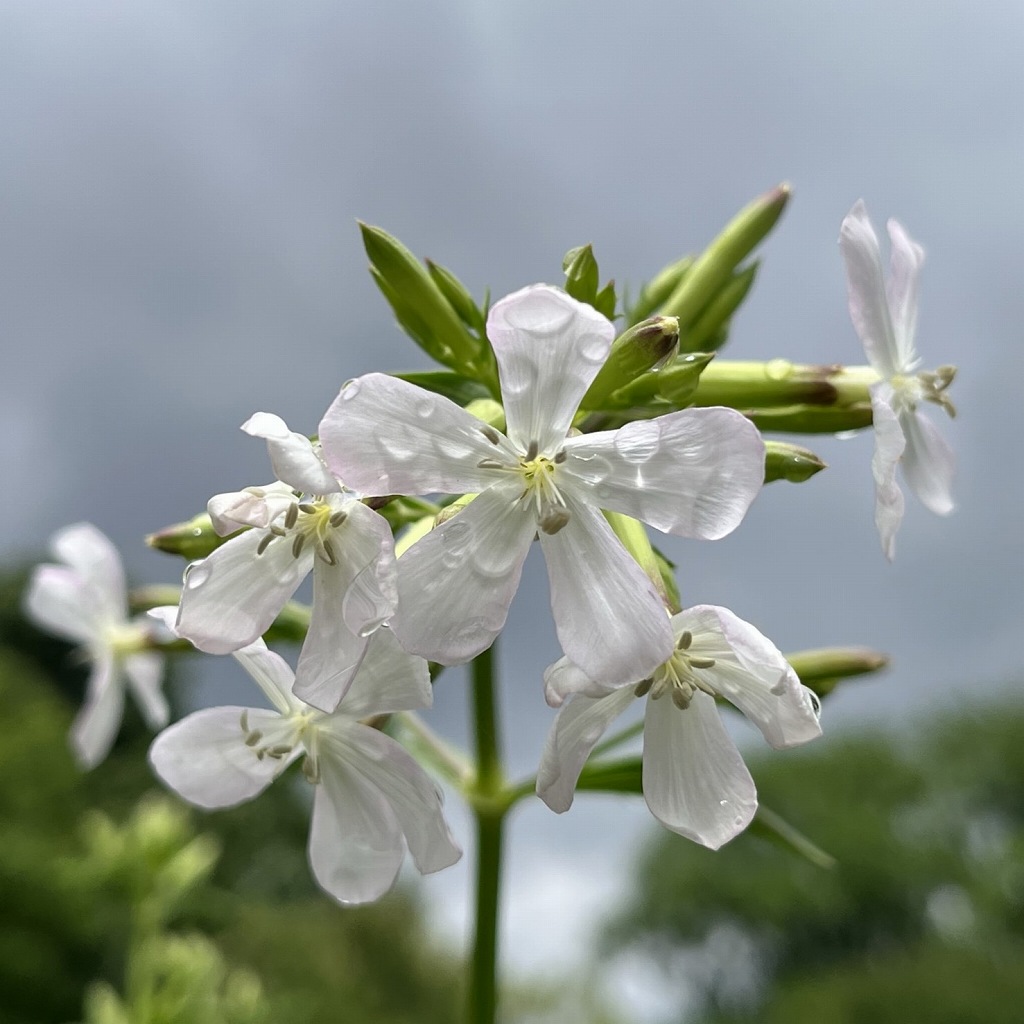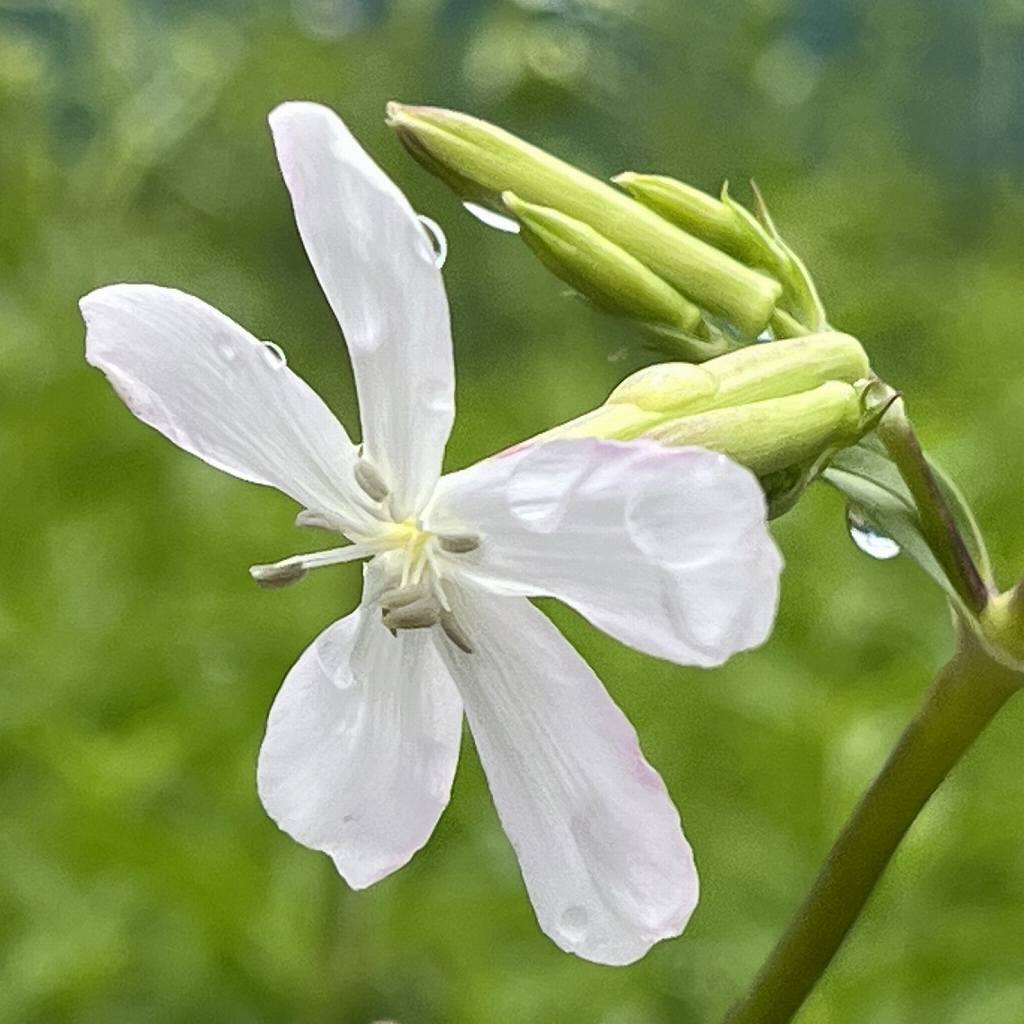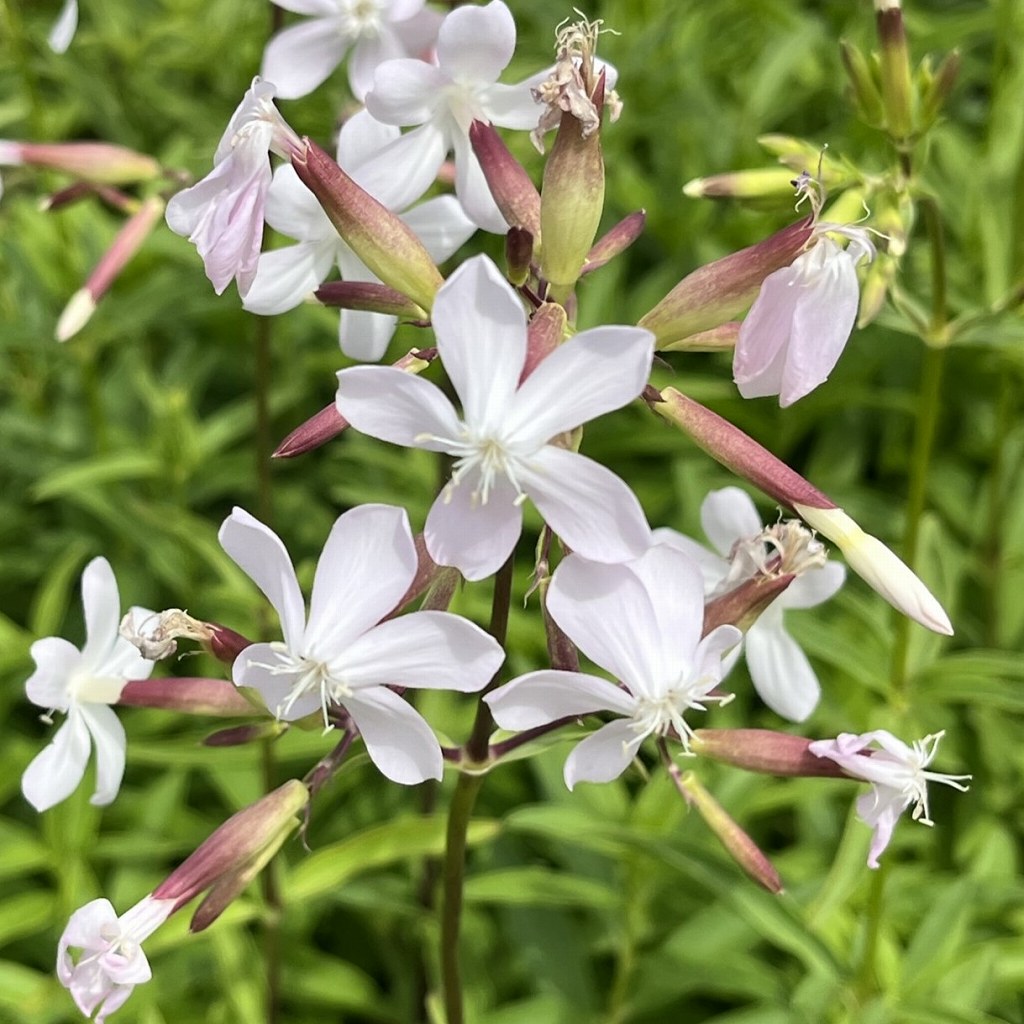サボンソウは古くから衣類の洗剤に用いられました。名前の由来も葉を水に浸して揉むと「石鹸」のように泡立つから。微かに甘く香ります。
Soapwort has long been used as a laundry detergent. Its Japanese name means “soap grass” because the leaves lather like soap when soaked in water and rubbed. The flower is faintly sweetly scented.
【仮名】サボンソウ, シャボンソウ, セッケンソウ, サポナリア
【和名】石鹸草
【英名】Soapwort, Saponaria
【学名】Saponaria officinalis
【誕生】07/ 30, 08/ 24
【開花】06, 07, 08, 09月
【花色】White, Pink




サボンソウ
サボンソウの概要
サボンソウはナデシコ科の多年草。原産地の欧州から世界各地に広がり、古くから衣類の洗剤、呼吸器系疾患の薬剤、お菓子の乳化剤などに用いられました。日本へも明治時代に観賞用で渡来し、標準種の一重咲きが各地で野生化する一方、園芸種の八重咲きが「サポナリア」で流通。
サボンソウの名前
サボンソウの名前の由来は葉を水に浸して揉むと「石鹸」のように泡立つから。サボンは釜炊き製法で石鹸を作ったイタリアの都市サヴォーナに由来します。英名ソープワートも「石鹸の草」、ラテン語の属名サポナリアも「石鹸」という意味。種小名オフィシナリアは「薬用」です。
サボンソウの姿形
サボンソウの茎は赤色を帯び、分枝せずに直立。葉は披針形で対生し、クッキリとした3~5本の脈が走ります。花は茎先から順に咲いて、花弁が5枚、その付け根に小さな副花冠、雄しべが10本。微かに甘く香り、夜その香りが強くなります。花後の蒴果は熟すと裂けて種子を散布。
サボンソウの種類
サボンソウには八重咲きの品種があります。「ロゼア・プレナ」は花が薄桃色、「ルブラ・プレナ」は濃桃色、「アルバ・プレナ」は純白色。近縁種の「蔓小桜」は匍匐性で、桃色や白色の小花が密に咲きます。かつて近縁種だった「道灌草」は現在、分類が変わってドウカンソウ属。
サボンソウの利用
サボンソウには界面活性作用のあるサポニンが含まれます。古くから茎葉の汁液が衣類の洗剤に、根茎の乾燥粉末が痰きりや咳止めなどの薬剤に、北アフリカ~南アジアの伝統的なお菓子ハルヴァの乳化剤などに。一方、摂り過ぎると下痢、嘔吐など中毒症状が生じる恐れがあります。
Soapwort
Overview of Soapwort
Soapwort is a perennial herb of the Caryophyllaceae family. It has spread from its place of origin in Europe to all over the world, and has long been used as a detergent for clothes, a medicine for respiratory diseases, and an emulsifier for sweets. It also came to Japan for ornamental use in the Meiji era, and while the standard single-flowered species has become wild in various places, the double-flowered garden variety is distributed as “Saponaria”.
Name of Soapwort
Soapwort’s Japanese name means “soap grass” because the leaves lather like soap when soaked in water and rubbed. Its pronunciation “Savon” comes from the Italian city Savona, where soap was made using the kettle-cooking method. The English name Soapwort also means “soap grass”, and the Latin genus name Saponaria means “soap”. The species name Officinalis is “medicinal”.
Shape of Soapwort
Soapwort stems are reddish and erect without branching. The leaves are lanceolate and opposite, with 3 to 5 distinct veins. The flowers bloom sequentially from the tip of the stem, with 5 petals, a small auxiliary corolla at the base, and 10 stamens. It has a faintly sweet scent that intensifies at night. The post-flowering capsule splits when ripe and disperses the seeds.
Types of Soapwort
Soapwort has double-flowered varieties. “Rosea Plena” has light pink flowers, “Rubra Plena” has dark pink flowers, and “Alba Plena” has pure white flowers. The closely related species “Ocymoides” is creeping and densely blooms pink or white florets. Once a closely related species “Vaccaria” is now classified as the genus Vaccaria.
Use of Soapwort
Soapwort contains saponins that have surfactant properties. Since ancient times, the juice of the stems and leaves has been used as a detergent for clothes, the dried powder of the rhizome has been used as a phlegm remover and cough suppressant, and as an emulsifier in Halva, a traditional sweet eaten from North Africa to South Asia. On the other hand, if you take too much, you may experience poisoning symptoms such as diarrhea and vomiting.


